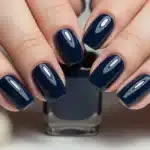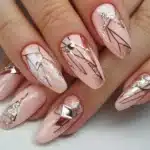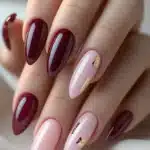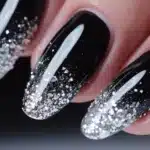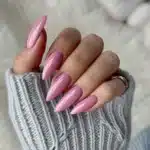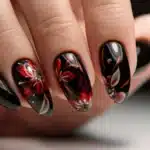Whether you’re battling frizz, seeking more volume, or simply wanting to embrace your natural texture, knowing your hair type is the first step towards achieving your hair goals. In this article, we will discuss how to figure out hair type. Let’s begin
The Foundation: Decoding Hair Texture
Hair texture is the cornerstone of hair typing. It’s what most people think of when they hear “hair type.” But there’s more to it than meets the eye. Let’s break it down:
The Four Main Hair Textures
- Straight (Type 1): Smooth, sleek, and resistant to curls.
- Wavy (Type 2): Forms an “S” shape, ranging from loose to more defined waves.
- Curly (Type 3): Springy ringlets that form a definite “S” pattern.
- Coily (Type 4): Tight coils with a zig-zag pattern from root to tip.
Determining Your Hair Texture
Figuring out your hair texture isn’t just about looking in the mirror. Here are some tried-and-true methods:
- The Wet Hair Test:
- Wash your hair and let it air dry without any product.
- Observe how it dries naturally.
- Straight hair will dry smooth and sleek.
- Wavy hair will form loose S-shapes.
- Curly hair will form defined ringlets.
- Coily hair will shrink significantly and form tight coils.
- The Strand Test:
- Take a single strand of clean, dry hair.
- Hold it up to the light.
- If it’s perfectly straight, you have Type 1 hair.
- If it forms a gentle “S” shape, you’re in the Type 2 category.
- Defined “S” shapes indicate Type 3 curls.
- Tight zig-zags or coils point to Type 4 hair.
- Natural Drying Observation:
- After washing, allow your hair to dry naturally without any manipulation.
- Take note of how your hair behaves as it dries.
- Does it remain straight? Form waves? Create spirals?
- This natural behavior is a strong indicator of your true texture.
“Understanding your hair texture is like learning a new language. Once you’re fluent, you can communicate with your hair in ways you never thought possible.” – Renowned Hairstylist, Jen Atkin
Diving Deeper: Hair Structure and Density
While texture is important, it’s not the whole story. Hair structure and density play crucial roles in determining your overall hair type and care needs.
Understanding Hair Structure
Hair structure refers to the thickness of individual hair strands. It’s categorized into three main types:
- Fine: Thin and delicate, often prone to breakage.
- Medium: Average thickness, the most common hair structure.
- Coarse: Thick and strong, often resistant to chemical treatments.
To determine your hair structure, try this simple test:
- Take a single strand of hair and place it next to a piece of sewing thread.
- If your hair is thinner than the thread, you have fine hair.
- If it’s about the same thickness, you have medium hair.
- If it’s noticeably thicker, you have coarse hair.
Assessing Hair Density
Hair density refers to how many hairs you have per square inch on your scalp. It’s typically categorized as:
- Low: Scalp is easily visible through the hair.
- Medium: Scalp is partially visible, but hair appears full.
- High: Scalp is barely visible, hair appears very thick.
To assess your hair density:
- Part your hair down the middle.
- Look at your scalp in a well-lit area or take a photo.
- If you can easily see your scalp, you have low density.
- If you can see some scalp but not much, you have medium density.
- If it’s difficult to see your scalp at all, you have high density.
How Structure and Density Influence Hair Care Needs
| Hair Structure | Hair Density | Care Needs |
| Fine | Low | Volumizing products, gentle handling |
| Fine | High | Lightweight products, frequent washing |
| Coarse | Low | Moisturizing treatments, thickening products |
| Coarse | High | Heavy-duty conditioning, frizz control |
Understanding your hair’s structure and density helps you choose the right products and styling techniques. For example, fine, low-density hair benefits from volumizing products and techniques, while coarse, high-density hair may need more intense moisturizing treatments and frizz control.
See Also : Laying Down After Botox In-Depth Healing Guide
The Critical Factor: Hair Porosity
Hair porosity is perhaps the most crucial, yet often overlooked, aspect of hair typing. It refers to your hair’s ability to absorb and retain moisture. Understanding your hair’s porosity level is key to choosing the right products and treatments.
Defining Hair Porosity
Hair porosity is determined by the structure of your hair’s cuticle layer. The cuticle is the outermost layer of the hair shaft, made up of overlapping scales. The arrangement of these scales affects how easily water and other substances can enter and exit the hair shaft.
The Three Levels of Porosity
- Low Porosity:
- Cuticles are tightly packed and lay flat.
- Hair is resistant to moisture and treatments.
- Products tend to sit on the hair rather than being absorbed.
- Medium Porosity:
- Cuticles are slightly raised.
- Hair absorbs moisture well and retains it.
- Easiest to manage and style.
- High Porosity:
- Cuticles are widely spaced or raised.
- Hair absorbs moisture quickly but loses it just as fast.
- Prone to frizz and damage.
DIY Porosity Tests
Determining your hair’s porosity doesn’t require fancy equipment. Here are three simple tests you can do at home:
- The Float Test:
- Take a clean strand of hair and place it in a glass of water.
- If it floats for a long time, you have low porosity hair.
- If it sinks slowly, you have medium porosity.
- If it sinks immediately, you have high porosity hair.
- The Spray Bottle Test:
- Spritz a section of clean, dry hair with water.
- If the water beads up and sits on top of your hair, you have low porosity.
- If the water is absorbed quickly, you have high porosity.
- If it’s somewhere in between, you likely have medium porosity.
- The Slip ‘n’ Slide Test:
- Take a strand of hair between your thumb and forefinger.
- Slide your fingers up the strand towards your scalp.
- If it feels smooth, you likely have low porosity hair.
- If it feels bumpy or rough, you probably have high porosity hair.
“Knowing your hair’s porosity is like having a secret weapon in your hair care arsenal. It guides everything from product choice to application techniques.” – Curly Hair Expert, Lorraine Massey
Scalp Health: The Often Overlooked Component
When figuring out your hair type, don’t forget about your scalp! A healthy scalp is the foundation for healthy hair, and your scalp type can significantly influence your overall hair care routine.
Understanding Scalp Types
Just like skin types, scalps can be categorized into different types:
- Dry Scalp:
- Feels tight and may be flaky.
- Often itchy and prone to irritation.
- Can lead to dry, brittle hair.
- Oily Scalp:
- Produces excess sebum.
- Hair may look greasy quickly after washing.
- Can lead to product buildup and potentially hair loss if not managed properly.
- Combination Scalp:
- Oily in some areas (usually the T-zone) and dry in others.
- May require different care for different sections of the scalp.
- Sensitive Scalp:
- Easily irritated by products or environmental factors.
- May be prone to redness, itching, or burning sensations.
Common Scalp Issues and Their Impact on Hair Type
| Scalp Issue | Impact on Hair | Solutions |
| Dandruff | Can make hair appear dull and lifeless | Anti-dandruff shampoos, scalp treatments |
| Seborrheic Dermatitis | May cause hair to look oily and feel heavy | Medicated shampoos, lifestyle changes |
| Psoriasis | Can lead to hair thinning in affected areas | Prescription treatments, gentle hair care |
| Scalp Acne | May cause discomfort and affect hair growth | Clarifying shampoos, avoiding heavy products |
The Connection Between Scalp Health and Hair Quality
A healthy scalp provides the optimal environment for hair growth. Here’s how scalp health impacts your hair:
- Nutrient Supply: A healthy scalp ensures proper blood circulation, delivering essential nutrients to your hair follicles.
- pH Balance: The right pH level (around 5.5) helps maintain the hair’s protective layer, preventing damage and frizz.
- Oil Production: Balanced oil production keeps hair moisturized without becoming greasy.
- Microbial Balance: A healthy scalp microbiome protects against fungal and bacterial infections that can impact hair health.
To maintain scalp health:
- Cleanse regularly with a gentle, pH-balanced shampoo.
- Exfoliate occasionally to remove dead skin cells and product buildup.
- Avoid harsh chemicals and heat styling tools that can irritate the scalp.
- Stay hydrated and maintain a balanced diet rich in vitamins and minerals.
Putting It All Together: Your Comprehensive Hair Type
Now that we’ve explored texture, structure, density, porosity, and scalp health, it’s time to put all these pieces together to determine your comprehensive hair type.
The Hair Type Matrix: Combining Texture, Structure, Density, and Porosity
Your comprehensive hair type is a combination of all these factors. Here’s an example of how it might look:
Example: 3B (Curly) / Medium Structure / High Density / High Porosity / Oily Scalp
This detailed classification gives you a complete picture of your hair’s characteristics and needs.
Step-by-Step Guide to Determining Your Unique Hair Type
- Assess Your Texture: Use the methods described earlier to determine if your hair is straight, wavy, curly, or coily.
- Evaluate Your Structure: Is your hair fine, medium, or coarse?
- Check Your Density: Is your hair low, medium, or high density?
- Test Your Porosity: Use the DIY tests to determine if you have low, medium, or high porosity hair.
- Examine Your Scalp: Is your scalp dry, oily, combination, or sensitive?
- Combine Your Findings: Put all these elements together to create your comprehensive hair type.
Common Pitfalls in Hair Typing and How to Avoid Them
- Ignoring Natural Texture: Don’t base your hair type on how your hair looks when styled. Always assess your natural, product-free hair.
- Overlooking Damage: Heat or chemical damage can alter your hair’s appearance and behavior. Consider your hair’s healthiest state when typing.
- Focusing Only on Texture: Remember, texture is just one part of the equation. Don’t neglect other factors like porosity and density.
- Misinterpreting Porosity: High porosity isn’t always due to damage. Some people naturally have high porosity hair.
- Neglecting Scalp Health: Your scalp is the foundation of hair health. Don’t forget to include it in your assessment.
By avoiding these common mistakes, you’ll get a more accurate picture of your true hair type.
You might like : Hair Tinsel on Curly Hair: The Ultimate Glamour Guide
Tailoring Your Hair Care Routine
Once you’ve determined your comprehensive hair type, it’s time to put that knowledge to work. A personalized hair care routine can make all the difference in achieving healthy, beautiful hair.
Product Selection Based on Hair Type
Here’s a quick guide to choosing products based on different hair characteristics:
- Fine Hair: Lightweight, volumizing products
- Coarse Hair: Rich, moisturizing products
- Low Porosity: Light, water-based products
- High Porosity: Heavy, oil-based products
- Oily Scalp: Clarifying shampoos, lightweight conditioners
- Dry Scalp: Sulfate-free shampoos, hydrating treatments
Washing and Conditioning Techniques for Different Hair Types
- Straight Hair: Can typically be washed more frequently
- Curly/Coily Hair: Benefits from co-washing (washing with conditioner) and less frequent shampoo use
- Fine Hair: Focus conditioner on ends to avoid weighing down roots
- Coarse Hair: May benefit from deep conditioning treatments
Styling Methods Suited to Your Hair Type
- Straight, Fine Hair: Volumizing mousses, light-hold hairsprays
- Wavy Hair: Sea salt sprays, curl-enhancing creams
- Curly Hair: Curl-defining gels, leave-in conditioners
- Coily Hair: Heavy creams, butter, oils for moisture and definition
Heat Styling Considerations
- Always use a heat protectant, regardless of hair type
- Lower heat settings for fine or damaged hair
- Higher heat settings may be needed for coarse hair, but use cautiously
“The best hairstyle is the one that makes you feel confident. Understanding your hair type helps you achieve that style with less effort and damage.” – Celebrity Hairstylist, Kristin Ess
Beyond the Basics: Addressing Specific Hair Concerns
Even within specific hair types, individual concerns can arise. Here’s how to address some common issues:
Color-Treated Hair Care
- Use color-safe shampoos and conditioners
- Incorporate weekly deep conditioning treatments
- Protect hair from sun exposure to prevent color fading
- Consider color-depositing products to maintain vibrancy between salon visits
Strategies for Thinning or Aging Hair
- Use volumizing products from root to tip
- Consider scalp treatments to promote hair growth
- Opt for layered haircuts to create the illusion of fullness
- Be gentle with styling to prevent breakage
Managing Frizz Across Different Hair Types
- For straight hair: Use lightweight, anti-humidity products
- For wavy/curly hair: Apply styling products to soaking wet hair
- For coily hair: Seal in moisture with oils or butter
- All hair types: Sleep on a silk or satin pillowcase to reduce friction
Dealing with Damage and Breakage
- Incorporate protein treatments into your routine
- Use leave-in conditioners to protect hair throughout the day
- Minimize heat styling and always use protection when you do
- Consider protective styles to give your hair a break
Environmental Factors and Hair Type
Your environment plays a significant role in how your hair behaves. Understanding this relationship can help you adapt your hair care routine for optimal results.
How Climate Affects Your Hair
Different climates can have varying effects on different hair types:
- Humid Climate:
- Can cause frizz in all hair types
- May enhance curl in wavy or curly hair
- Can make straight hair fall flat
- Dry Climate:
- Can lead to brittle, static-prone hair
- May cause scalp dryness and flaking
- Can make curls lose definition
- Cold Climate:
- Can lead to dry, brittle hair
- May cause static electricity
- Can make scalp dry and itchy
Seasonal Hair Care Adjustments
As seasons change, so should your hair care routine. Here are some tips:
- Summer:
- Use UV-protective products
- Increase moisture to combat sun damage
- Consider protective styles for beach days
- Winter:
- Use more hydrating products
- Avoid going outside with wet hair
- Consider using a humidifier indoors
- Spring/Fall:
- Adjust your routine as humidity levels change
- Deep condition to prepare for the upcoming season
Protection Strategies for Various Environments
- Beach/Pool:
- Apply leave-in conditioner before swimming
- Wear a swim cap or protective hairstyle
- Rinse hair immediately after swimming
- City Living:
- Use clarifying treatments to remove pollution buildup
- Consider a silk scarf or hat for extra protection
- Increase antioxidant-rich products in your routine
- High Altitude:
- Use extra moisturizing products
- Protect hair from harsh winds with hats or scarves
- Stay hydrated to help hair retain moisture
The Role of Nutrition in Hair Health
What you put into your body is just as important as what you put on your hair. A balanced diet rich in certain nutrients can significantly improve hair health, regardless of your hair type.
Essential Nutrients for Healthy Hair
- Protein: The building block of hair. Found in lean meats, fish, eggs, and legumes.
- Iron: Helps carry oxygen to hair follicles. Sources include red meat, spinach, and lentils.
- Vitamin C: Aids in iron absorption and collagen production. Found in citrus fruits, berries, and bell peppers.
- Biotin: Promotes hair growth. Sources include nuts, seeds, and avocados.
- Omega-3 Fatty Acids: Supports scalp health. Found in fatty fish, flaxseeds, and walnuts.
Dietary Considerations for Different Hair Types
While a balanced diet benefits all hair types, some may need extra attention:
- Fine Hair: Focus on protein-rich foods to strengthen hair strands.
- Dry, Brittle Hair: Increase intake of healthy fats like avocados and nuts.
- Oily Hair/Scalp: Reduce saturated fats and increase water intake.
Supplements: Do They Really Help?
While a balanced diet should provide all necessary nutrients, some people may benefit from supplements. However, always consult with a healthcare professional before starting any supplement regimen.
Popular hair supplements include:
- Biotin
- Collagen
- Vitamin D
- Iron (for those with deficiency)
Remember, supplements are not a magic solution and work best in conjunction with a healthy diet and proper hair care routine.
Tools and Techniques for Different Hair Types
The right tools can make a world of difference in your hair care routine. Here’s a guide to choosing and using the best tools for your hair type:
Choosing the Right Brushes and Combs
| Hair Type | Recommended Tool | Benefits |
| Straight, Fine | Boar Bristle Brush | Distributes natural oils, adds shine |
| Wavy | Wide-Tooth Comb | Detangles without disrupting wave pattern |
| Curly | Denman Brush | Defines curls, reduces frizz |
| Coily | Finger Detangling | Gentlest method, prevents breakage |
Heat Styling Tools: What Works Best for Your Hair Type
- Straight Hair: Flat irons for sleekness, large barrel curling irons for waves
- Wavy Hair: Diffuser attachments for enhancing natural waves
- Curly Hair: Hooded dryers for even drying, small barrel curling wands for definition
- Coily Hair: Hooded dryers, hot combs for straightening (use with caution)
Protective Styling Options
Protective styles can help all hair types by reducing manipulation and protecting ends. Some options include:
- Braids
- Twists
- Buns
- Weaves
- Wigs
Choose styles that don’t put too much tension on your scalp and remember to still care for your hair and scalp while in protective styles.
Read this interesting post too : Toner Turned My Blonde Hair Brown – Causes and Solutions
Embracing Your Natural Hair: Tips and Tricks
Learning to work with, not against, your natural hair type can lead to healthier, more beautiful hair. Here are some tips for embracing your natural texture:
Working with, Not Against, Your Hair Type
- Straight Hair: Embrace sleek styles, try texturizing products for volume
- Wavy Hair: Enhance waves with scrunching techniques and wave-enhancing products
- Curly Hair: Use the “squish to condish” method, avoid brushing dry hair
- Coily Hair: Focus on moisture, use protective styles to retain length
Building Confidence in Your Natural Texture
- Experiment with different styles that complement your natural texture
- Follow social media accounts that showcase your hair type for inspiration
- Remember that healthy hair is beautiful hair, regardless of texture
The Power of a Personalized Hair Care Routine
- Keep a hair journal to track what works and what doesn’t
- Don’t be afraid to mix and match products to find your perfect combination
- Be patient – it can take time to see results from a new hair care routine
“The moment you embrace your natural hair is the moment you truly set yourself free.” – Natural Hair Advocate, Nikki Walton
FAQs: Your Hair Type Questions Answered
Can hair type change over time?
Yes, hair type can change due to factors like hormonal changes, aging, medication, and significant lifestyle changes. However, these changes are usually gradual and affect characteristics like density or porosity more than overall texture.
How often should I reassess my hair type?
It’s a good idea to reassess your hair type annually or after any significant life changes (pregnancy, menopause, major illness, etc.). This allows you to adjust your hair care routine as needed.
What if my hair doesn’t fit neatly into one category?
Many people have combination hair types. For example, you might have 2C waves at the crown but 3A curls underneath. In this case, you may need to use techniques and products suited for both types.
How do hormonal changes affect hair type?
Hormonal changes can affect hair growth cycles, density, and even texture. For example, many women experience changes in their hair during pregnancy or menopause. Thyroid imbalances can also significantly impact hair health and appearance.
Conclusion: Your Hair, Your Journey
Understanding your hair type is just the beginning of your hair care journey. With this knowledge, you’re now equipped to make informed decisions about products, styling techniques, and treatments that will work best for your unique hair.

Sarah Williams is an experienced blogger and fashion enthusiast at Glammer Galaxy. With a passion for beauty and style, she shares expert insights on hair trends, nail art, and fashion tips. Her creative flair and years of experience make her a go-to source for all things glam!


